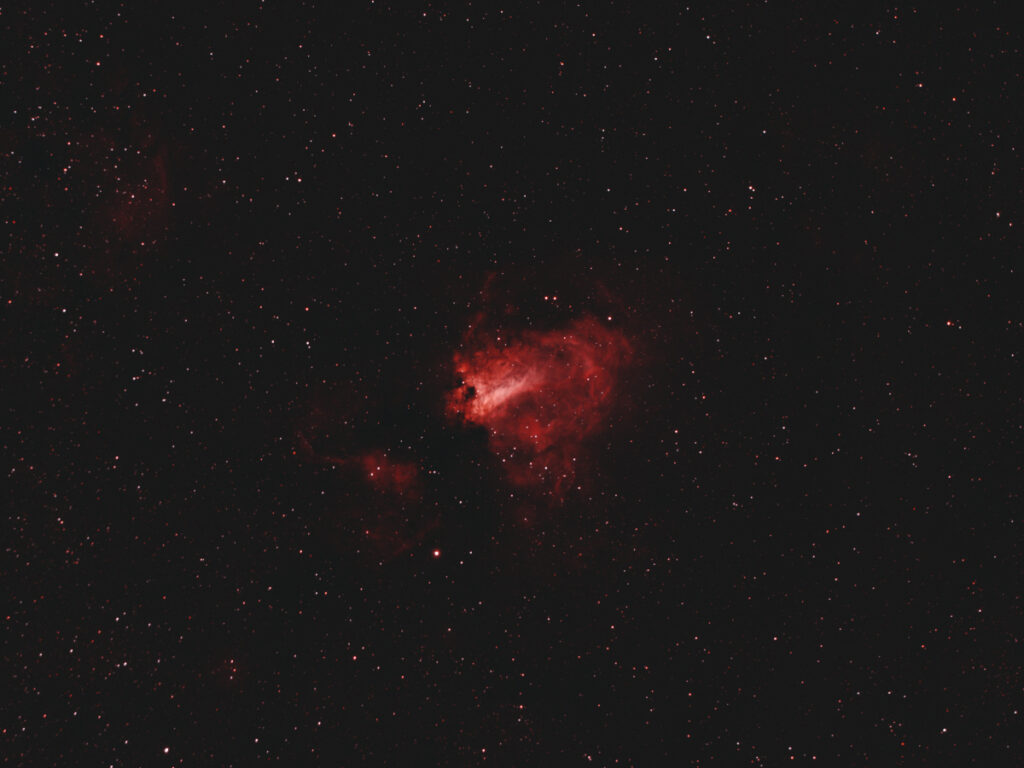
Telescope: ES Comet Hunter MN6 at f/4.8, Orion Atlas EQ-G
Camera: Baader modified Nikon 610
Filter: 2” Radian Triad Ultra Hb, OIII, Ha, SII filter
Guide scope: Williams Optics 50mm, ASI290MM mini, PHD
Exposure: 67x60sec, ISO 400, saved as RAW
Darks: Internal (Long Exposure Noise Reduction On)
Flats: 64×1/5sec, tee shirt flats taken at dusk
Average Light Pollution: Red zone, Bortle 8, poor transparency, moonlight
Lensed Sky Quality Meter: 17.6
Stacking: Mean with a 1-sigma clip.
White Balance: Nebulosity Automatic
Software: Backyard Nikon, Nebulosity, Deep Sky Stacker, Photoshop
M17 is a stellar nursery lying about 6,000 light years away along the southern Milky Way in the Sagittarius-Carina arm of our galaxy. The soft red glow of this beautiful emission nebula comes from young stars embedded within the nebula setting the surrounding interstellar hydrogen aglow. M17 is one of the brightest emission nebula is the sky and is visible in small telescopes under dark skies. Even under urban skies the bright inner region of the nebula is a fairly easy target.
M17 is currently well placed in the evening sky rising in the southeast as the sky darkens.
Recent Comments